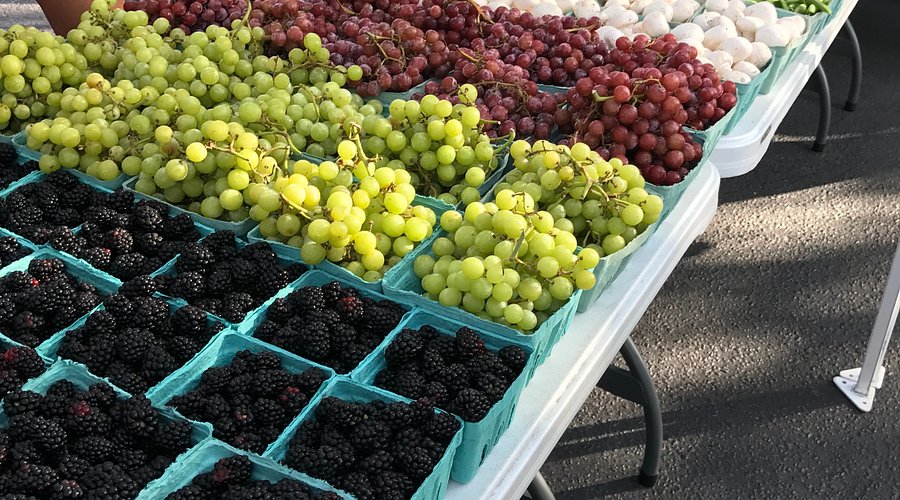Discover how to embrace the farm-to-table movement while honoring Southern cooking traditions. Learn to source local ingredients, plan seasonal menus, and create dishes that celebrate the flavors of each season.
Share This Recipe
# Farm-to-Table Southern Style: Seasonal Cooking with Local Ingredients
Southern cooking has always been deeply connected to the land. Long before "farm-to-table" became a trendy culinary movement, Southern cooks were building their menus around what was fresh, local, and in season. Our grandmothers didn't shop this way because it was fashionable—they did it because that's what was available, affordable, and most importantly, what tasted best.
The Southern Farm-to-Table Tradition
Walk into any Southern kitchen from decades past, and you'd find cooks planning meals around the garden harvest, the farmer's roadside stand, or what was available at the local market. This wasn't a lifestyle choice—it was simply how people cooked.
Why Local and Seasonal Matters
When you cook with ingredients at their peak season, several magical things happen. The flavors are more intense and true—a summer tomato from your local farm tastes worlds apart from a winter grocery store tomato shipped from across the country. The nutritional value is higher since produce picked at peak ripeness has maximum nutrients, and hasn't lost vitamins during long transport and storage. You'll save money because seasonal produce is abundant and therefore less expensive. Plus, you're supporting local farmers and the regional economy, keeping agricultural traditions alive in your community.
The Connection to Southern Heritage
Southern cuisine evolved from this farm-to-table necessity. Classic dishes like collard greens, field peas, squash casserole, tomato pie, peach cobbler, and watermelon rind pickles weren't created randomly—they were born from cooking what was abundant in each season. Southern cooks became masters at preserving, canning, and pickling to extend the harvest and enjoy seasonal flavors year-round.
Building Relationships with Local Farmers
The heart of farm-to-table cooking is knowing where your food comes from. Here's how to connect with farmers in your area.
Finding Your Sources
Visit farmers' markets early for the best selection and to chat with farmers when they're less busy. Many farms offer CSA (Community Supported Agriculture) boxes where you pay upfront for a season's worth of weekly produce boxes—it's like a subscription to fresh, local food! Look for roadside farm stands, often unstaffed with an honor box for payment. Don't hesitate to visit farms directly—many welcome visitors and even offer pick-your-own opportunities. Online directories like LocalHarvest.org can help you find farms near you.
Questions to Ask
Build relationships by asking thoughtful questions. Find out what's coming into season soon so you can plan ahead. Ask about farming practices—while they may not be certified organic, many small farms use sustainable, chemical-free methods. Learn about their favorite ways to prepare their produce—farmers often have the best recipe tips! Inquire about seconds or "ugly" produce at a discount, perfect for sauces, soups, and preserves.
Cooking Through the Southern Seasons
Let's explore what to cook when throughout the year, Southern style.
Spring: Rebirth and Fresh Greens (March-May)
Spring in the South brings tender new growth and the first fresh vegetables after winter.
What's in Season: asparagus, spring onions and scallions, new potatoes, English peas, lettuce and salad greens, strawberries, radishes, and fresh herbs like mint and parsley.
Spring Menu Ideas:
Summer: Abundance and Preservation (June-August)
Summer is when Southern gardens explode with produce, and kitchens heat up with canning and preserving.
What's in Season: tomatoes (so many tomatoes!), corn, okra, bell peppers, cucumbers, squash and zucchini, watermelon, peaches, blackberries, butterbeans and field peas, and hot peppers.
Summer Menu Ideas:
Preservation Projects: This is prime time for canning tomatoes, making peach preserves, pickling cucumbers and okra, freezing corn and butterbeans, and creating pepper jellies.
Fall: Harvest and Comfort (September-November)
As weather cools, heartier vegetables come into season, perfect for comfort food.
What's in Season: sweet potatoes, winter squash and pumpkins, apples, pears, turnips and rutabagas, collard and mustard greens, Brussels sprouts, pecans, and muscadines.
Fall Menu Ideas:
Winter: Root Vegetables and Citrus (December-February)
While the garden slows down, winter brings its own treasures, plus time to enjoy those summer preserves.
What's in Season: collard and kale, cabbage, carrots, winter squash (stored from fall), citrus (in the Deep South), turnips, parsnips, and sweet potatoes (stored).
Winter Menu Ideas:
Adapting Classic Recipes to Seasonal Ingredients
The beauty of Southern cooking is its flexibility. Here's how to keep traditional recipes fresh by swapping in seasonal ingredients.
The Flexible Vegetable Casserole
The classic Southern casserole formula is endlessly adaptable: seasonal vegetable + cream sauce + crunchy topping = delicious side dish.
- Spring version: Asparagus casserole with lemon cream sauce and breadcrumbs
- Summer version: Squash casserole with cheese and Ritz crackers
- Fall version: Brussels sprouts gratin with bacon and Gruyère
- Winter version: Turnip and potato casserole with herb topping
Seasonal Variations on Cornbread
Basic cornbread welcomes seasonal additions:
- Spring: Fresh corn and chive cornbread
- Summer: Jalapeño and tomato cornbread
- Fall: Pumpkin cornbread with sage
- Winter: Sweet potato cornbread with maple butter
Farm-Fresh Salads Year-Round
Southern "salads" go beyond lettuce:
- Spring: Asparagus and new potato salad
- Summer: Tomato and cucumber salad
- Fall: Apple, pecan, and dried cranberry salad
- Winter: Citrus and avocado salad (in the Deep South)
Practical Tips for Seasonal Cooking
Make farm-to-table Southern cooking work for your busy life.
Menu Planning Strategies
Shop first, plan second—let what looks best at the market inspire your menu rather than shopping for a predetermined list. Stock your pantry with Southern staples so you're always ready: cornmeal, self-rising flour, buttermilk powder, bacon, ham hocks, good hot sauce, vinegar (for quick pickles), honey and molasses, and plenty of butter!
Batch Cooking and Preserving
When something is abundant and affordable, buy extra and preserve it. Blanch and freeze: Great for corn, butterbeans, and greens. Quick pickle: Cucumbers, okra, and peppers keep for weeks refrigerated. Make and freeze: Tomato sauce, pesto, and fruit for cobblers. Can for long-term storage: Preserves, pickles, and tomatoes using proper canning methods.
Don't Forget the Meat
Local sourcing isn't just for vegetables. Seek out local meat, eggs, and dairy:
Creating Your Own Southern Food Shed
Your "food shed" is the geographic region that produces your food, similar to a watershed.
Start Small and Build
You don't have to source everything locally overnight. Start with one category like eggs or tomatoes, gradually add more local products as you find sources, prioritize items where flavor difference is dramatic like tomatoes, sweet corn, and peaches. Don't stress about staples you can't source locally—Southern cooking has always incorporated traded goods like coffee, sugar, and spices.
Grow Your Own
Even a small space can produce surprising amounts of food. Try growing tomatoes and peppers in containers on a sunny patio, fresh herbs in windowsill pots, or lettuce and greens in a small raised bed. Many Southern vegetables are remarkably easy for beginners.
Join the Community
Farm-to-table cooking connects you with your community. Join or start a cooking club focused on seasonal recipes, participate in community gardens, attend agricultural festivals and farm tours, share your harvest with neighbors, and swap preserves and pickles with friends.
The Rewards of Seasonal Southern Cooking
When you embrace seasonal, local cooking, several wonderful things happen beyond just better-tasting food.
You'll rediscover anticipation—waiting all year for peak peach season makes those first peaches so much sweeter. You'll become a better cook as you learn to work with ingredients at their prime, understanding their natural flavors. You'll eat more vegetables since they taste so much better fresh and seasonal. You'll save money on produce while spending it on quality protein and pantry items. You'll support your local economy and help preserve agricultural land and farming traditions.
Most importantly, you'll be cooking the way Southern grandmothers have always cooked—with respect for the seasons, appreciation for the land, and a deep connection to your community.
Getting Started This Week
Ready to embrace farm-to-table Southern cooking? Here's your action plan:
1. Find a farmers' market near you and visit this weekend
2. Buy one or two unfamiliar seasonal vegetables and ask the farmer how to prepare them
3. Choose one classic Southern recipe and adapt it with seasonal ingredients
4. Stock your pantry with Southern staples so you're ready to cook anything
5. Plan to preserve something when you find it abundant and affordable
Remember, Southern farm-to-table cooking isn't about perfection or rules—it's about connection. Connection to the land, to the seasons, to the farmers who grow your food, and to the generations of Southern cooks who have always known that the best meals start with the freshest ingredients.
Your grandmothers were farm-to-table cooks before it had a name. Now it's your turn to carry on that delicious tradition.
Affiliate Disclosure: As an Amazon Associate, we earn from qualifying purchases.
Never Miss a Recipe!
Join 10,000+ Southern food lovers getting our weekly newsletter with new recipes, cooking tips, and exclusive content delivered straight to your inbox.
Subscribe Now


